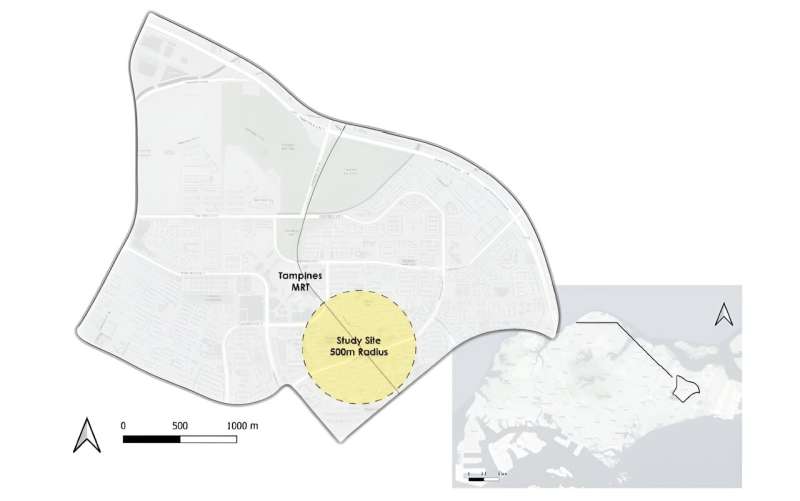
Modern lifestyle is increasingly sedentary, raising concerns about its impact on our health. To cultivate healthier lifestyles among citizens, cities like Singapore has responded with various initiatives. One focus area is active mobility, in which policies and infrastructure are put in place to promote activities like walking and cycling. But in hot and humid Singapore, what does it take to encourage people to walk more than they currently find comfortable?
A new study by researchers from the Singapore University of Technology and Design (SUTD) sheds light on what motivates Singapore residents to walk. Through focus groups with residents in Tampines, the third-largest town in Singapore, the team—led by SUTD Professorial Fellow Dr. Belinda Yuen—identified key factors that influence a neighborhood’s walkability.
These findings are published in the paper “Redefining active mobility from spatial to social in Singapore” in the Journal of Transport & Health.
“Interest in neighborhood walkability has increased in recent decades due to its potential to promote healthier lifestyles and carbon-neutral urban environments. But most of the existing studies are on Western populations and temperate cities,” said Dr. Yuen, who wanted to understand if the same factors from these studies would apply to residents living in a tropical, high-rise, and high-density environment like Singapore.
To achieve this, the team used mixed research methods, including community survey, personal life logging, camera tracking, and focus group discussion. They convened three focus groups, primarily involving older adults aged 55 years and above who live in Tampines.
Conducted during the COVID-19 pandemic, the first group, comprising three older adults was tasked to define what makes a neighborhood walkable and to come up with a list of non-negotiables in a walkable neighborhood.
The second group, comprising another three older adults, worked on refining the list provided by the first group and added other conditions to the list. The final focus group, which had four older adults and two younger adults, finalized the features on the list. During each session, participants would also share their daily experiences of walking around Tampines.
From these discussions, the team found that it is pertinent for the ideal walkable environment to consider both physical, social, and psychological aspects. Pedestrian safety and covered walkways were top concerns, alongside opportunities to interact with neighbors during a walk.
“Walkable neighborhoods are also spaces of social and psychological connection in the community,” explained Dr. Yuen. In the discussions, many older adults reflected a desire to connect with their community in shared public spaces through activities, such as eating at hawker centers and playing interactive games like Pokémon Go.
The availability of amenities in the area is also an important consideration, as many participants shared that they walk with a specific purpose or destination in mind.
By identifying key features that residents perceive would make a neighborhood walkable, the team hopes that their study can aid urban planners and designers.
“Our study contributes evidence-based findings, prototype designs, and methods to help urban planners better understand the everyday lived experiences of walking in local neighborhoods. Knowing where, why, and how people walk, as well as what they value, is relevant to creating people-centric built environments,” said Dr. Yuen.
She also emphasized that the decision to recruit older adults in the study was a conscious one: “Older adults are a rich source of knowledge on lived experience and can be citizen scientists for building healthier communities.”
Focusing on the older populace also produces deeper insights to better understand their unique needs. With Singapore’s aging population, it has become increasingly important for urban planners to take into account the concerns of older residents that might not necessarily be reflected in a survey of the general populace.
The team looks forward to continuing their research on walking. They are currently preparing grant proposals to further explore the factors that influence senior living spaces in various neighborhoods across Singapore, with the aim of creating a more walkable city to improve health outcomes.
More information:
Belinda Yuen et al, Redefining active mobility from spatial to social in Singapore, Journal of Transport & Health (2024). DOI: 10.1016/j.jth.2024.101869
Provided by
Singapore University of Technology and Design
Citation:
Strolling around a Singapore town: What makes a neighborhood ideal for walking? (2024, September 9)
retrieved 9 September 2024
from https://phys.org/news/2024-09-strolling-singapore-town-neighborhood-ideal.html
This document is subject to copyright. Apart from any fair dealing for the purpose of private study or research, no
part may be reproduced without the written permission. The content is provided for information purposes only.
